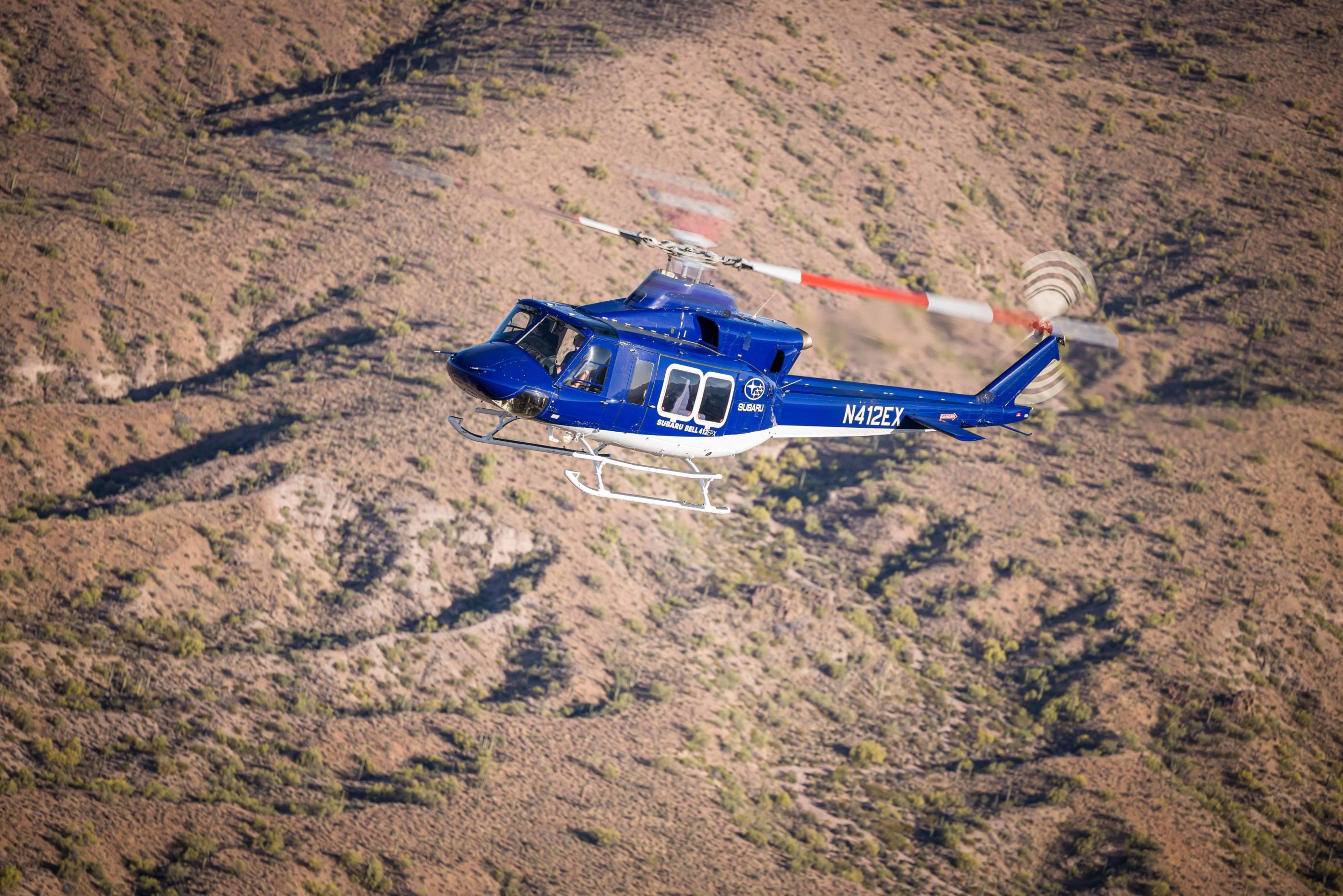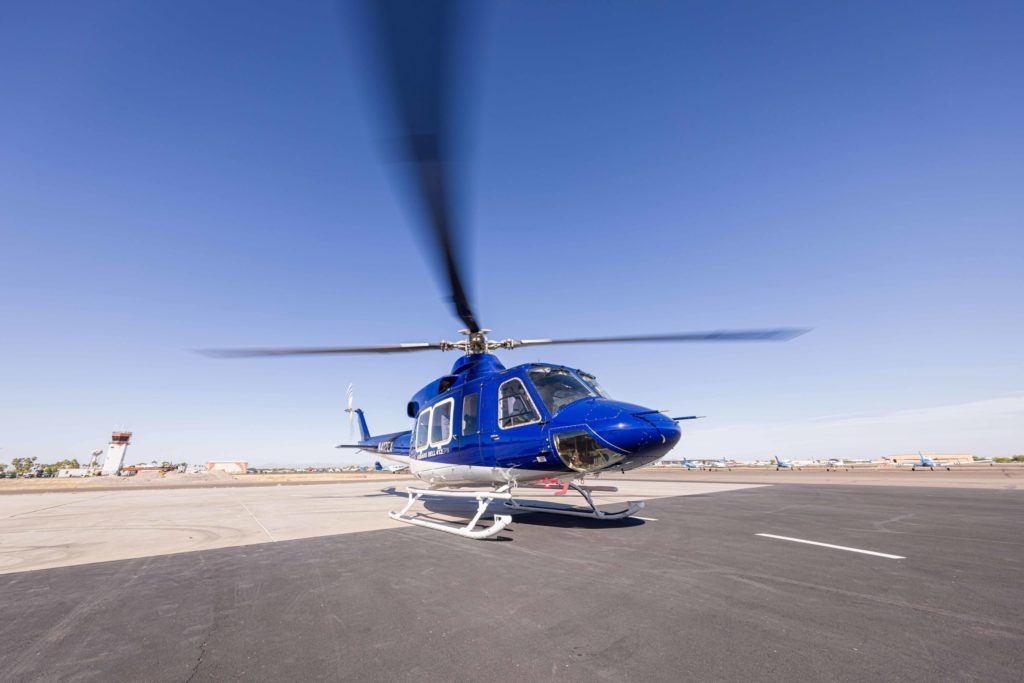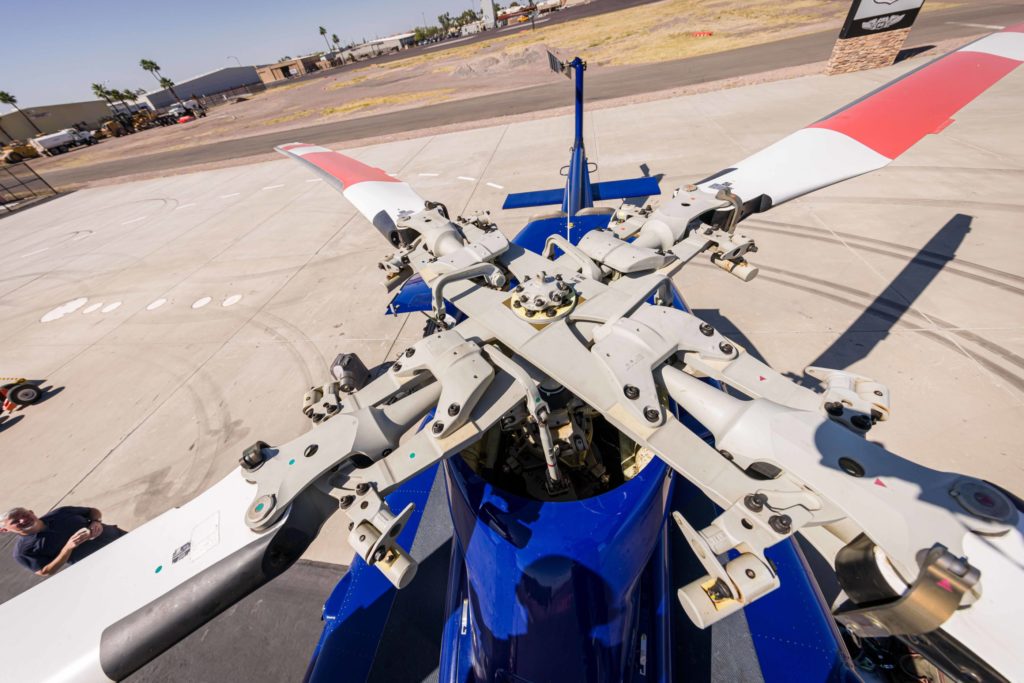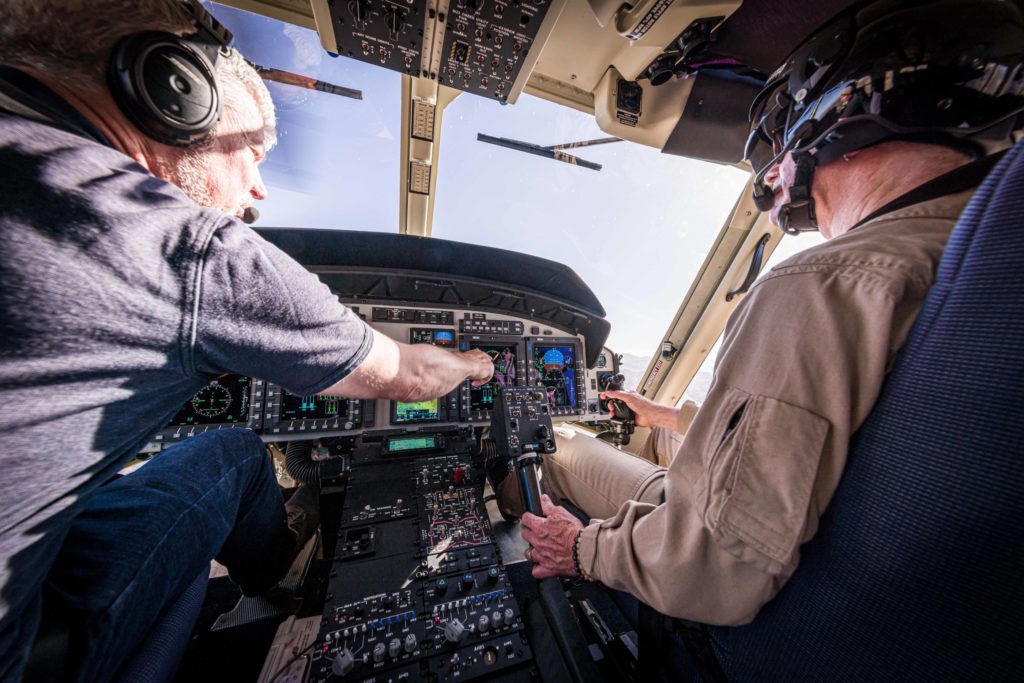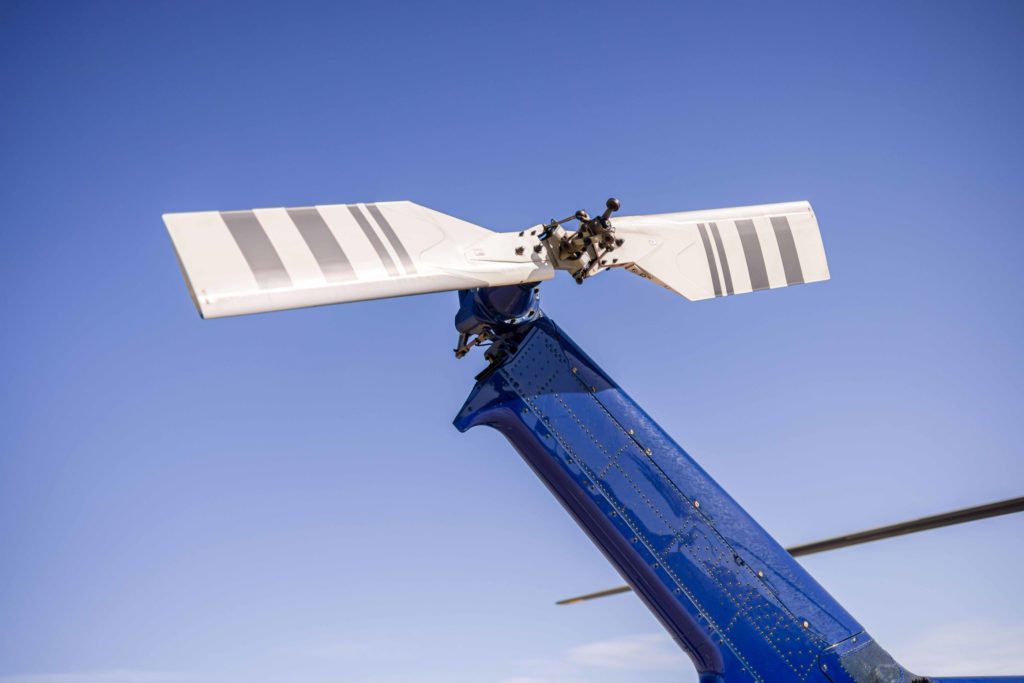Photos by Billy Hardiman
When I told a few of my swing-wing friends I was going to fly the new Bell 412, the responses were similar. One had flown it for firefighting work, another in the military and then as a search-and-rescue ship, and yet another for a sheriff’s department. The feedback from all three ended with: “Nice ship. You’ll like it.”

And I did. But this newest 412 — the Subaru Bell 412EPX — is a very different animal from those my friends had flown. This latest iteration, Bell’s equivalent of a one-ton dually (dual rear wheels) pickup truck, traces its lineage back over four decades and 11 variants to 1981 — Ronald Reagan’s first year as U.S. President. The 412 was preceded by the two-bladed 212, and its ancestry reaches all the way back to the venerable UH-1 “Huey” of the mid-50s. Those are some seriously deep roots!
To date, about 1,300 Bell 412s have been delivered around the world, and operators have racked up over seven million flight hours with it. When something has been in production that long, it gives the manufacturer an opportunity to find all the little things that aren’t quite right, and learn all the ways operators want to use the ship, and refine and improve the product to fit those needs. Bell certainly has done both of those things with the 412 over the years.
The 412’s large sliding doors and separate, smaller “wing doors” create a yawning 7.7-foot (2.3-meter) opening on each side of the helicopter; once inside, you’ll find a cavernous 220-cubic foot (6.2-cubic meter) cargo area, which can be equipped with up to 13 passenger seats in the standard, high-density configuration, as was the ship I flew.
The robust, metal main rotor hub has been used on the 412 since the beginning, though periodically refined over the years. Composite main rotor blades are “on condition.” The tail blades are metal with new composite inner straps.

Notice the new Subaru Bell branding on the side of this ship? That’s not just gratuitous marketing — it’s the helicopter’s official name.
Bell and Subaru (formerly Japan’s monster Fuji Heavy Industries conglomerate — it changed its parent corporate name to Subaru in 2017) have been partners on helicopter design and manufacturing since the 1960s. The latter has license-built several Bell helicopters over the years, including the 204B-2, 205B, and AH1-S Cobra.
This new 412EPX was “co-developed” with Subaru to compete for Japan’s Ground Self-Defense Forces (JGSDF) contract (which it won). It is manufactured in Bell’s Mirabel, Quebec, plant, but the first Japan-built UH-2 (by which the EPX is known in Japan) flew as this was written in late May 2022.
Old-school and new tech
Once you climb up the high skids and swing into the seat, go ahead and slam the door. It won’t hurt a thing. It goes “Clunk!” like a 1956 Buick. Once seated, the view is somewhat restricted due to the amount of thick structure surrounding the cockpit. This became more evident during the photo formation flight. Eyebrow windows above my head were covered on this ship because it’s a requirement for instrument flight rules (IFR) certification to prevent flicker vertigo.

The 412EPX is a curious mix of old-school and new tech: four Astronautics display units across the expansive main instrument panel show normal flight instruments and navigation screens, plus indication and crew alerting system (EICAS) displays and schematics for fuel, engines, electrical, drives, and hydraulics. I found the screens bright and contrasty, and it was simple to find pages with the soft keys. A backup digital flight display with airspeed, altimeter and attitude indicator sits at the top center of the panel.
The autopilot mode selector buttons are old-school plastic, not digital, and I found it challenging to see what button I was pushing under the glareshield in contrasty sunlight — especially with sunglasses on or my visor down.

The 412 sports the second generation BasiX Pro integrated avionics system package (the same as its more svelte sister, the Bell 429). One large Garmin GTN 750 sits low on the center forward panel, and a smaller, standard GTN 650 is installed on the front edge of the center console. I also found it a bit challenging to discern details on that with sunglasses or with helmet visor down.
The broad overhead panel has dozens of circuit breakers, wiper controls, hefty dimmer knobs for all-LED instrument and ledger lights, and a plethora of old-school toggle switches for battery master, generators, exterior lights, environmental controls, etc. There’s even a bright/dim selector for the annunciator panel. The center console is another bristle of toggle switches to operate things like fuel pumps, fuel valves, and fuel transfer switches, and a red guarded switch for force trim. The avionics audio panels are well-placed toward the rear of the center console.
The 412EPX has Bell’s proprietary PSI (or power situation indicator) — a single on-screen needle that shows torque (Q), measured gas temperature (MGT), or gas producer (Ng), depending on the first limit reached, making power management stupid-simple. The PSI is now installed on all Bell helicopters, from the 505 through the 525.
Let’s fly!
Greg Maitlen, Bell’s affable regional sales manager, was my mentor in the left seat as we cranked up to depart Heliponents’ Falcon Field ramp just after sunrise in early May (bragging season in the Phoenix area for its mild, sunny weather). Before start, you manually turn on fuel pumps, open fuel valves and check transfer pumps with switches, but the single channel FADEC makes automatic engine starts a non-event after your switch throwing.
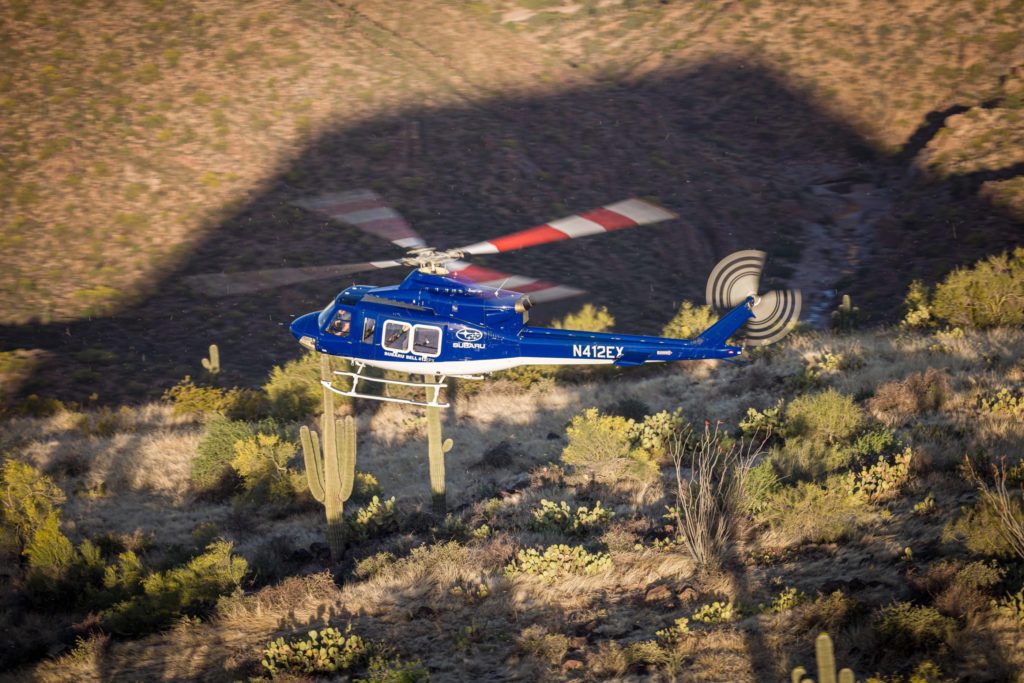
Before takeoff, the pilot is required to throw a three-position switch on the collective to manually raise the power turbine (Np) speed from 100 percent to 103 percent (which ultimately raises rotor RPM). This gives additional one-engine performance for Category A operation. Then, as you accelerate through 60 knots after takeoff, you switch the power turbine speed back to 100 percent. That three percent reduction gets your attention the first few times you hear it, making you wonder if the engines are rolling back.
In any aircraft in which one has little or no experience, the handling characteristics, ergonomics, and systems design — good or bad — are perceived quickly when flying formation. I found the 412EPX an instant delight as we joined the Bell 505 camera ship. The machine just feels comfortable, like a Huey.
Like the EPI version before it, the 412EPX comes standard from the factory with the BLR Aerospace Fast-Fin installed, which greatly improves performance and tail rotor effectiveness in a hover. It’s powerful, effective up to 45 knots sideward or rearward below 2,000 feet (610 meters) density altitude (except for 35 knots in a direct tailwind), and 35 knots above that all the way to 14,000 feet (4,270 meters) density altitude. The tail rotor sits high on the narrowed vertical fin, keeping it out of harm’s way when operating off-airport. I could easily walk under it when the ship was sitting level on the ground.
I initially over-controlled the torque pedals, and learned that my over-amped actions induced roll moments, not just yaw, due to the high location of that tail rotor. Gotta go easy on the inputs with this much tail rotor authority.
There are a lot of hiding places behind that big nose and wide panel, which made it challenging to see directly below when we landed for photos in a confined area on the top of a bucolic butte. Kicking the nose off to the side on vertical approaches improved the visibility a bunch.
Improvements
Pratt & Whitney Canada PT6T-9 Twin-Pac engines are each rated at 1,122 horsepower for takeoff, same as the EPI, but are significantly uprated over the original 900-horsepower engines on the legacy EP.

The EPX has an 11 percent increase in torque capability below 60 knots, mainly as a result of improvement in metallurgy and gear geometries in the main rotor transmission. That is a major deal for some operators, since with this increased torque limit, you can get more of the power available from the PT6s without being limited by the mast and transmission torque limit, as before. The older 412 models had a five-minute limit at max torque. Now you can go from max continuous to 100 percent torque with no time limit. “You can run 100 percent torque until you run out of gas,” said Maitlen. “And you can now run 101 to 111 percent torque for five minutes below 60 knots.
“With that increased torque margin, it might mean the difference between having to drop, or ‘pickle,’ a heavy load if an engine fails while hovering, versus gently landing the load, or continuing to hoist a human on the hook into the cabin, and flying away,” he continued.
For safety’s sake, the EPX’s transmission has the latest FAR 29 amendment for a guaranteed 30-minute run-dry in the event of a loss of lubricant in the transmission. That’s comforting.
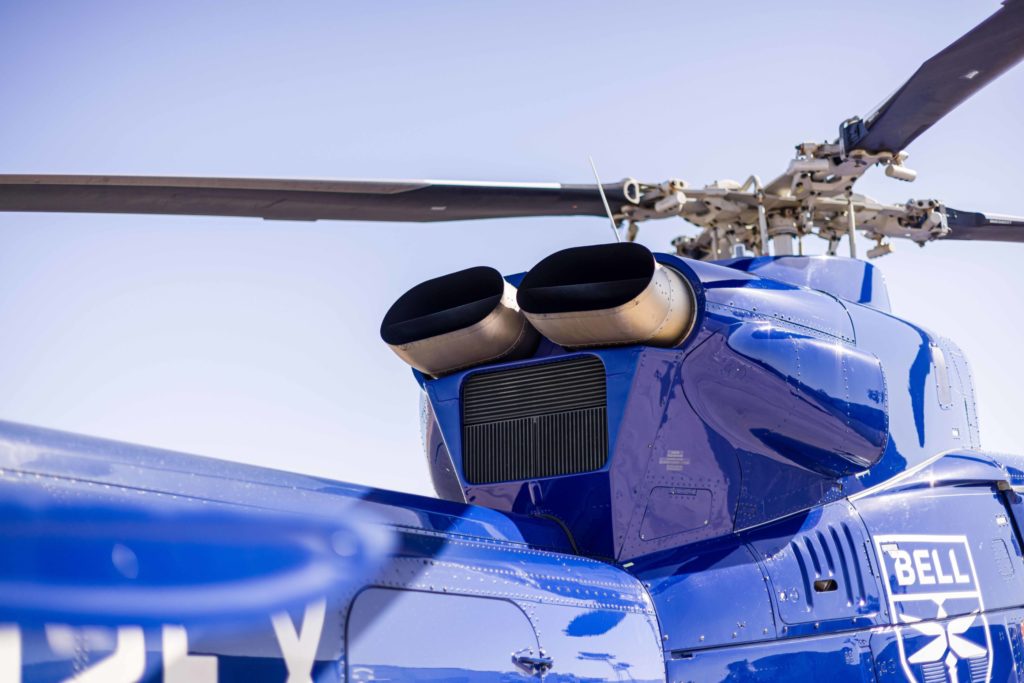
Max internal gross weight is up 300 pounds (136 kilograms) over the EPI to 12,200 lb. (5,535 kg). External max gross weight is now 13,000 lb. (5,895 kg), and lift capacity on the hook increases from 4,500 to 5,000 lb. (2,040 to 2,270 kg).
The empty weight of our test ship, serial number three, was 7,480 lb. (3,395 kg). With people, fuel and cargo during our evaluation flight, our gross weight was around 10,500 lb. (4,765 kg) — a fairly common hoist or search-and-rescue weight. With a rather mild morning temperature of 77 F (25 C) in the dry desert air northeast of Phoenix, we hovered out of ground effect at 7,000 feet (2,135 meters) pressure altitude (just a few hundred feet short of 10,000 feet/3,050 meters density altitude), and enlisted the software’s OEI training mode to simulate an engine failure. At that weight, when the engine rolled to idle, I held the hover with plenty of reserve power. That demonstration, and later perusal of the pilots operating handbook once back on the ground, makes it clear that high and hot performance is one of this machine’s strong suits.
Ferry home
After our photo mission and evaluation flight in Phoenix, we ferried the ship back to Colorado. Coming through the southern end of the Sangre de Cristo mountains with about 30 knots of westerly wind was a non-event. There’s something to be said for high disk-loading like the 412EPX has. The reliable three-axis Honeywell SPZ-7600 automatic flight control system, standard on the 412 since the beginning of production, did a capable job of handling the ship through the mountain turbulence.

Fuel gauges are very intuitive — a quick glance assures you of sufficient supply. Standard fuel capacity is 331 US gallons (1,255 liters) or 2,247 lb. (1,020 kg), but Bell offers several additional tank options that can bring the total fuel up to 3,358 lb. (1,525 kg). There are no fuel flow gauges on the factory standard panel, though Bell offers them as an option. Maitlen explained that many utility operators don’t really need that information since they’re constantly changing collective position, and thus fuel flow, as they work. However, on long cross-country flights like this one, it’d be nice to have them.
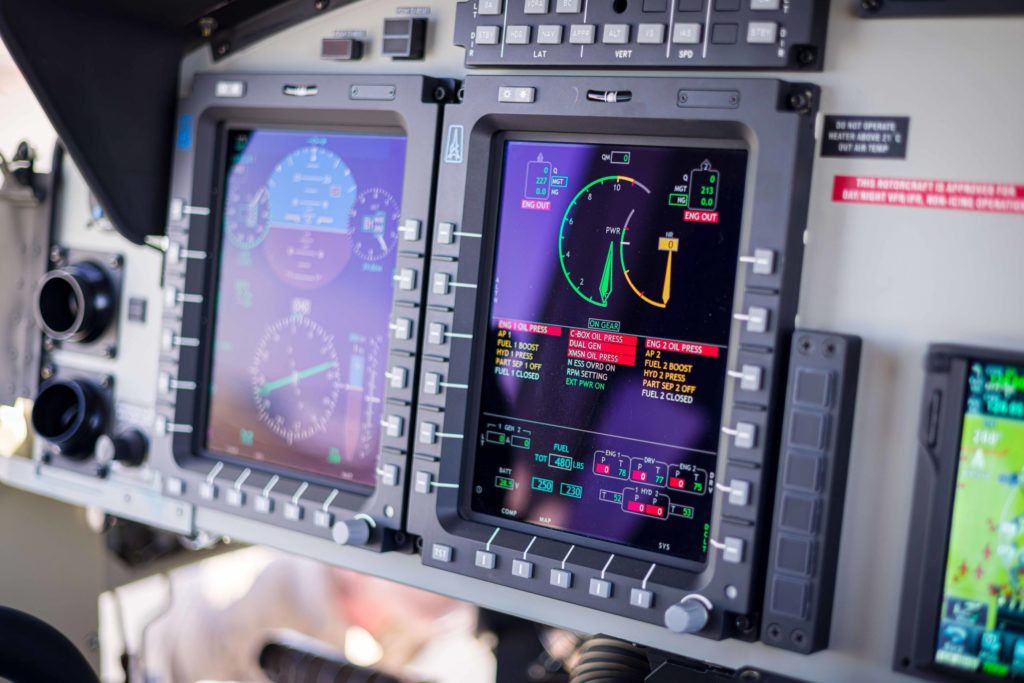
Our burn rate was about 760 lb. (345 kg) per hour on our 630-nautical mile (1,166-kilometer) ferry flight.
Landing downwind of the home airport jet fuel farm with gusty, 30-knot surface winds created plenty of mechanical turbulence. This reminded me again how powerful that tail rotor was, and prompted me to dampen my torque pedal inputs. Maybe I’ll get a chance to practice that some more one day.

When I landed the ship for the last time at my home airport in Colorado, it had been a long day, with nearly seven hours in the saddle, but I had developed a fondness for the Bell-Subaru 412EPX. It’s a big helicopter built to handle big jobs, but feels as comfortable as a treasured, well-worn pair of Red Wing work boots. Maitlen summed it up perfectly when he said before parting, “The EPX is the 412 that we have always wanted to build from day one.”





